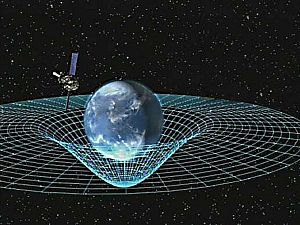 |
| Human brain By NIDA |
Electrodes placed on the cortical surface can measure the brain's electric activity. An EEG or electroencephalogram picks up voltage fluctuations resulting from an ionic current of the cortical neurons located close to the brain's surface. Recently, it has been noted that the process can be reversed. Electrical, magnetic, radio waves or focally targeted sources can modulate the brain's electric activity. Brain stimulation can be used in the treatment of disease and for mental manipulation of healthy subjects.
In disease:
The number of brain areas that can be manipulated with electric impulses toward physiological and physical changes is growing. Brain stimulation uses electrodes implanted deep in the brain to influence activity there. It can be an effective treatment for Parkinson's disease, depression, chronic pain, and other movement disorders, but the results have been inconsistent so far. For example, individual differences in the position of brain structures can influence the procedure's effectiveness. Potentially dangerous side effects can occur due to the incision. Deep brain stimulation without incision is a brainwave "mirroring" of neural oscillations between the two hemispheres. The new technique is a promising treatment for post-traumatic stress disorder (PTSD) patients. It improves insomnia, depressive mood, and anxiety, and the results seem to be durable through 6 months after the treatment.
In healthy subjects:
In healthy subjects, brain stimulation can enhance creativity. Stimulation of the frontal brain has increased performance and endurance in tasks requiring sustained attention and focus. Magnetic stimulation improved spatial-precision memory. Transcranial direct current stimulation with slow oscillations during slow-wave sleep almost doubles overnight memory retention. It improves the piloting skills of novice pilots. Studies in rodents have shown motivation and behavior modification by manipulating the VTA (small area at the base of the brain, marked on the human brain image), potentially treating addiction and other mental problems. However, the treatments are based exclusively on empirical studies because the theoretical background for brain stimulation still needs to be included.
A new, physics-based hypothesis of consciousness is urgently needed to give brain stimulation a strong predictive power. The book 'The Science of Consciousness considers brain frequencies and emotions as the brain's energy states. For example, enhanced brain frequencies are essential in focused activities and during physical or emotional pain. In contrast, decreasing frequencies correspond to joy and creative states. However, in the brain's complex operation, the relative change of the frequencies and their rhythm is essential, not their absolute value. Changing the energy balance through manipulating brain frequencies has a powerful physiological influence, making it an efficient modulator of thinking, emotional states, and behavior. Long-term stimulation can modify the strength or even induce the formation of new synaptic paths, leading to learning and some possible long-term consequences.
Infrared light (IR) has recently become popular as a high spatial resolution and safe method to regulate neural function. Although the underlying mechanism remains unclear, infrared neuromodulation methods have been used to treat neural activation, central nervous system disorders, and cognitive enhancement. IR neural modulation (INM) can increase cerebral blood flow and improve emotional and mental functions. Behavioral modifications can stabilize brain stimulation's effects.
Brain stimulation is intriguing and has enormous promise, meaning it is here to stay. Currently, it is easier to justify balancing the potential benefits and side effects in the clinic than in education, in a classroom, or at home.
Sign up for my mailing list to never miss a post.
The book Emotional Reasoning: Insight into the Conscious Experience is published on August 30, 2024.
Order:
Amazon Books







